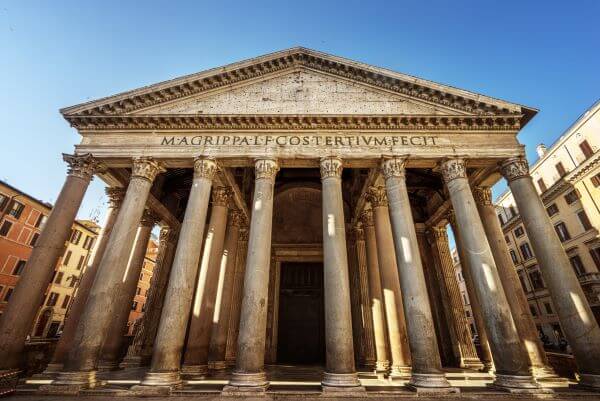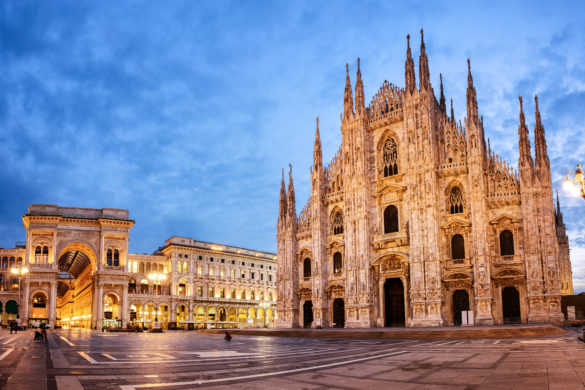The Pantheon, a marvel of ancient Roman architecture, has stood the test of time for nearly two millennia. This iconic structure, built between 118 and 128 AD by Emperor Hadrian, continues to draw visitors from all over the world to Rome, Italy. The Pantheon’s remarkable preservation and its influence on modern architecture make it an essential destination for history buffs and architecture enthusiasts alike. This article delves into the history, design, and significance of this magnificent building.
History of the Pantheon
The Pantheon we see today is not the original structure on the site. The first Pantheon was commissioned by Marcus Agrippa in 27 BC but was destroyed by a fire in 80 AD. Hadrian rebuilt the temple between 118 and 128 AD, dedicating it to all the Roman gods. The Pantheon has undergone several transformations throughout its existence, including its conversion into a Christian church in 609 AD when it was consecrated as Santa Maria ad Martyres. This conversion played a significant role in the Pantheon’s preservation, as it protected the building from the widespread destruction and looting of ancient Roman monuments during the Middle Ages.
Design and Architecture
The Pantheon’s architectural design is a testament to the ingenuity and skill of ancient Roman engineers. The building consists of two main parts: the portico, a rectangular entrance hall with a triangular pediment, and the rotunda, a massive circular chamber with a central oculus.
The portico features 16 massive granite Corinthian columns, each 39 feet tall and weighing around 60 tons, which were transported from Egypt. The triangular pediment above the columns bears an inscription crediting Marcus Agrippa as the builder, despite Hadrian overseeing the current Pantheon’s construction.
The rotunda, the most distinctive feature of the Pantheon, boasts a perfect hemispherical dome made of concrete. The dome’s diameter and height are equal, measuring 142 feet, which gives the space a harmonious and balanced feel. The dome’s construction employed a sophisticated system of gradually decreasing thickness and using lighter materials, such as tufa and pumice, as the structure rises. This innovative technique reduced the weight of the dome without compromising its stability.
The oculus, a 27-foot-wide circular opening at the top of the dome, serves as the Pantheon’s only natural light source. The sunlight streaming through the oculus creates a mesmerizing and dynamic play of light and shadow within the rotunda. The oculus also reduces the weight of the dome and helps to distribute the stress evenly across its surface.
Significance of the Pantheon
The Pantheon’s architectural innovations have had a profound impact on Western architecture. Its dome, the largest unsupported dome in the world until the 20th century, served as a blueprint for numerous later structures, such as the Florence Cathedral’s dome by Brunelleschi, St. Peter’s Basilica in Rome, and the United States Capitol.
Besides its architectural significance, the Pantheon also serves as the final resting place for several prominent Italians. Among them are the Renaissance artist Raphael, King Victor Emmanuel II, and King Umberto I.
Visiting the Pantheon
Today, the Pantheon is a popular tourist attraction and an active place of worship. Visitors can marvel at the building’s architectural genius, explore its rich history, and experience the ethereal atmosphere created by the oculus’s light. There is no entrance fee, making it accessible to all who wish to appreciate this ancient Roman masterpiece. Maximize your time with skip-the-line Pantheon tickets, bypassing queues and enjoying swift entry to the Pantheon.
The Pantheon stands as a testament to ancient Rome’s architectural prowess and innovative spirit. Its impressive design, long-standing influence on Western architecture, and rich history make it an unmissable destination for those visiting the Eternal City. As one of the best-preserved ancient Roman buildings, the Pantheon provides a unique window into the past and a powerful reminder of the extraordinary achievements of human ingenuity. Whether you are an architecture enthusiast or simply curious about the marvels of ancient civilizations, visiting the Pantheon in Rome will surely leave you awestruck and inspired.












